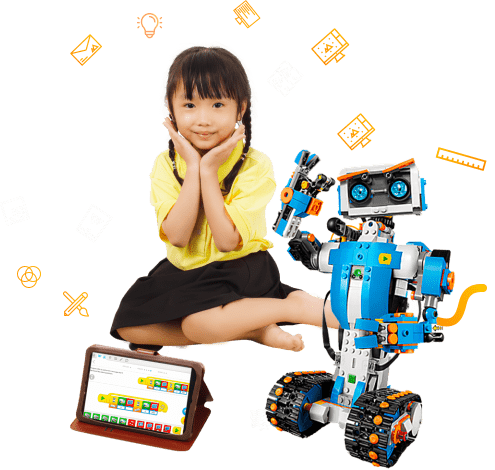Mục lục
Digital learning is replacing traditional educational methods more and more each day. With how rapidly classrooms are changing, it is best to forget methods you may remember from when you were in school and start thinking about newer teaching and learning techniques based on digital learning tools and technologies. The inclusion of digital learning in the classrooms can vary from simply using tablets instead of paper to using elaborate software programs and equipment as opposed to the simple pen.
This could entail using sites, services, programs, teaching tools, and technologies like study aids built for at-home use. Even social networks and communications platforms can be used to create and manage digital assignments and agendas. Irrespective of how much technology is integrated into the classroom, digital learning has come to play a crucial role in education. It empowers students by getting them to be more interested in learning and expanding their horizons. Here is how digital learning is a step up from traditional education methods.
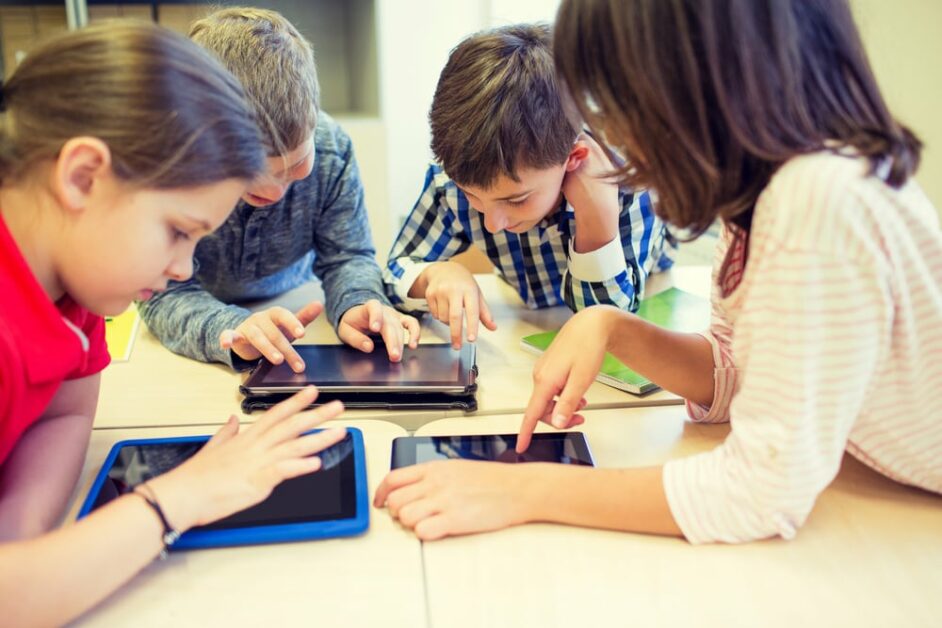
1. Digital Learning Makes Students Smarter
Learning tools and technology enable students to develop effective self-directed learning skills. They are able to identify what they need to learn, find and use online resources, apply the information on the problem at hand, and even evaluate resultant feedback. This increases their efficiency and productivity. In addition to engaging students, digital learning tools and technology sharpen critical thinking skills, which are the basis for the development of analytic reasoning. Children who explore open-ended questions with imagination and logic learn how to make decisions, as opposed to just temporarily memorizing the textbook.
Educational tools by DigiUni Junior such as Robotics, Scratch, Scratchjr, LegoWedo,,, teach children how to collaborate and work successfully in groups. This is typically done through gamification. Gamification is a great feature of interactive learning because it teaches children playing in a group to depend on and trust each other in order to win a game or achieve their goals. They also promote cooperation and teamwork which are very important skills, in every aspect of life.
Interactive social skill games are excellent learning tools that teach children discipline because playing games requires children to follow rules and guidelines in order to participate. Even children who might grow frustrated with other learning methods may stick with games longer because playing itself is rewarding. This ends up helping them develop patience, another useful life skill.
Children also develop positive feelings of accomplishment from mastering new knowledge and skills using digitized learning tools giving them the confidence they need to want to learn even more new things. It is commendable that millions of courses by the best educators are available for free to anyone with an internet connection. The possibilities are endless.
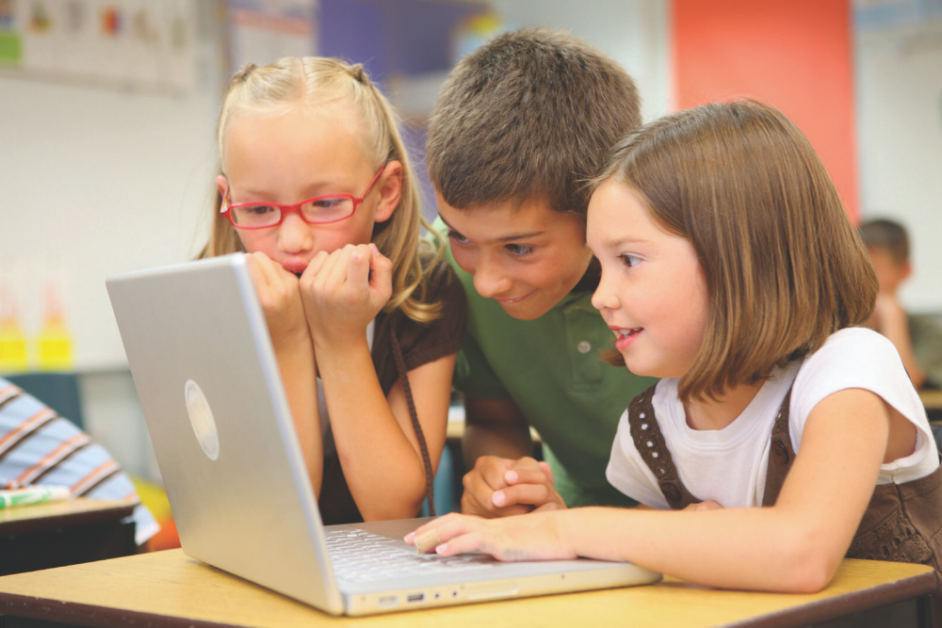
2. Digital Learning Is Making Students Self-Motivated and More Accountable
Students using digital learning tools and technology become more engaged in the process and more interested in growing their knowledge base, they may not even realize that they’re actively learning since they’re learning through engaging methods such as peer education, teamwork, problem-solving, reverse teaching, concept maps, gamification, staging, role playing, and storytelling.
Since digital learning is far more interactive and memorable than voluminous textbooks or one-sided lectures, they provide better context, a greater sense of perspective, and more engaging activities than traditional education methods. This allows students to better connect with the learning material. Further, they often offer a more interesting and involving way to digest information. This is reflected in their retention rates and test scores. Also, when students can track their own progress it can improve motivation and accountability.
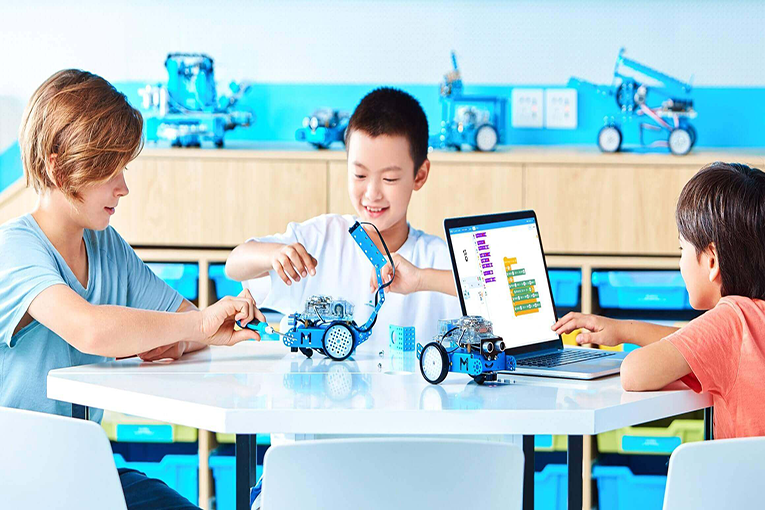
3. Digital Learning Tools Involve Educators and Parents to a Deeper Extent
Learning tools and technologies like social learning platforms make it easy for teachers to create and manage groups. The shift to digital learning can approximate the benefits of tutoring while freeing up time for teachers to address individual and small group needs. The opportunity to customize learning sequences for each student will make education more productive by closing learning gaps sooner and accelerating progress. Dynamic grouping, workshops, and project-based learning can add lots of collaborative learning to the already present education model.
DigiUni Junior offers digitalized teaching tools including curriculum-integrated and enrichment digital content, gamification platforms, and language learning with the objective of enriching and enhancing the classroom experience. These help teachers teach better and students learn better through engagement and enjoyment.
Apart from teachers parents can use interactive activities to encourage their child’s interest in learning since gamification makes the process much more enjoyable and interesting. Parents can also explore online learning activities with their child which can serve as an extension to what they are learning in their classrooms. Digital learning tools and technology provide enjoyment for kids as well as numerous benefits in terms of developing a child’s well-being. Everyone benefits with the digitization of learning.
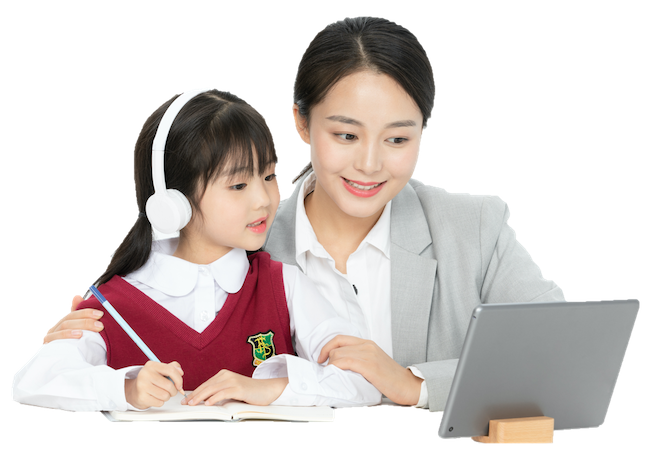
4. Digital Learning Tools and Technology Is Rapidly Increasing Information Sharing
In recent years, the shift from print to digital has impacted how we learn. Just as printing press did six centuries ago, this transition is transforming formal education and increasing learning opportunities. Digital learning is not only allowing students to access more and more information but also ensuring that the information in question is customizable and suited to their personal needs. The opportunity to help every student learn at the best pace and path for them is the most important benefit of digital learning.
Digital learning tools and technology enable educators to rapidly share information with other educators in real-time. The explosion of free and open content and tools has created an environment of sharing economy. By embracing digital devices and connected learning, classrooms around the country and around the globe can not only coordinate with one another to share insights but also boost learning, experience, and communications skills. The practice also allows educators to enjoy a level playing field. Schools can save money while ensuring equitable access to educational material as expensive private schools.

5. Increasing Students’ Employability with Digital Learning Tools and Technology
Equipping students with the requirements of higher education and holding a career at a young age has become one of the most crucial responsibilities of school education. Digital learning solutions based on problem-based learning emphasize on learning methods that are constructive, collaborative and calls the students’ attention to a real-world approach to learning.
With the ongoing employment crisis especially after Covid pandemic, it is crucial that if young people are unable to find jobs, they should have the ability to create their own and ideally even generate jobs for others. For this purpose, newer methods of learning and education need to be incorporated into the school curriculums, starting right from elementary school. Digital learning tools and technology in elementary, secondary, and high schools prepares students for higher education and modern careers by helping them acquire skills including problem-solving, familiarity with emerging technologies, and self-motivation.

Finally, Traditional Education Methods Have To Be Replaced
Traditional lectures may still exist along with the new-age learning tools and technology, but the lecture materials should be provided as a supplement to classroom activities and moved online for students to reference outside of the classroom. Classroom time is better used for discussing the curriculum, engaging in activities with teams and completing class projects. Students often have the option to pace their learning and even study ahead with a digital learning tool if they wish to do so. By helping children think outside their typical learning modes, digital learning inspires creativity and lets children feel a sense of accomplishment that encourages further learning.
Digital learning tools and technology fill the gaps where traditional classroom teaching falls behind. In fact, some of the efficiencies such tools bring are simply unmatchable by traditional learning techniques. From the environmental impact recognized by the need for less paper for handouts and books to saving time with quick access to information and the ease of research, digital learning provides an effective way to cut costs, maximize resources and heighten both reach and impact for students and educators alike.
PREPARE YOUR CHILD DIGITAL LEARNING WITH CODING – DESIGN ONLINE CLASSES AT DIGIUNI JUNIOR
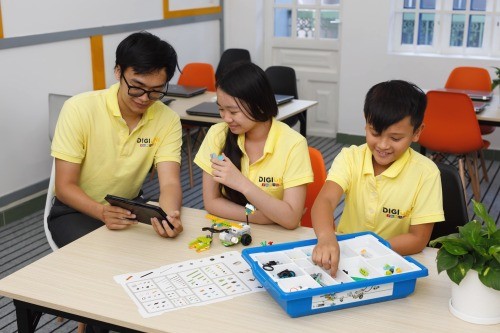
DigiUni Junior offers exciting online coding, multimedia design classes for kids 7 -18 yo. We cover full needed range of skills, mindset & creative development to inspire our young students to operate tool like Scratch, Makers Empire, Photoshop, Python, JavaScript and many more. By providing personalized approach to testing & free trial classes, we offer curriculum that suits for each student. With our highly experienced teachers & modern international program, your kids will discover their abilities and improve neccessary skills to get various jobs in the future.
✔️ Scratch Course -This is coding course is for kids 7-9 yo. Scratch is a visual programming language for kids age 7-10, that is sopecifically designed for young children to learn the logic of programming language in more easy & fun way. It’s a stepping stone to learn real laanguage like Python in the future. Scratch is good foundation for kids understanding what coding is. The whole idea behind it is to simplify the process of creating step by step logical commands, program animations, designing games, and building interactive stories, so that literally anyone could do it from a young ag. By completing these courses students will learn foundational programming concepts, help kids improve multiple skills such as: logic, critical thinking, problem solving skills and boost creativity.
✔️Python Course – This is coding course for kids 9-18 yo when your children have a good foundation and understand of what coding is. We offer Python – one of the most popular and in-demand coding languages of today & next 20 years. Python is considered one of the easiest coding languages to learn, requires fewer lines of code to run unlike other coding languages, so even beginners can start creating relatively quickly. Python is great for kids, help kids improve multiple skills including logic, critical thinking, problem solving skills and boost creativity. Python also uses plain English commands, it will help them develop a more concise and structured approach to storytelling with the English language. It will also help your kid with maths through visualise more abstract concepts in a fun format. Coding is a great skill for future career with high income – so develop it in your kids from young age!
✔️Photoshop Course – This is Multimedia Design course for kids 9-18 yo. Photoshop is a photo editing and graphic design software with many incredible functions like editing images, creating gifts, posters, collages and many more – it is a powerful tool for photo editing. The program is used worldwide not just for graphic editing but also for digital art projects. By completing these courses, student will improve their design thinking and boost unlimited creativity. Your kid can become professional designers and earn money at a young age.

